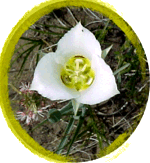GRAND RIVER RANGER DISTRICT
District Ranger - Jack Isaacs
PO Box 390
Lemmon, South Dakota 57638
(605) 374-3592
(Note - the following links will open in a new window.)
The Grand River Ranger District Office is located
in Lemmon,
SD, about 120 miles southwest of the North Dakota capital of
Bismarck
and about 200 miles northeast of Rapid City, SD.
It manages both the Grand River National Grassland (155,000 acres)
and the Cedar River National Grasslands (6,717 acres).
The Grand River National Grassland is
characterized by rolling hills, river breaks, and some badland type
areas, dominated by mixed grass prairie. The north and south forks
of the Grand River dissect the land unit, drain into Shadehill Reservoir
and then flow easterly to the Missouri River.
A dominant resource is the seasonal grazing
forage which is leased to 116 permittees in 61 allotments through the
Grand River Cooperative Grazing Association. This association
is nationally recognized for it's superior range management and cooperation
with the Forest Service. In 1993, they received the Chief's National
Range Management Award.
The area also supports substantial wildlife
populations of whitetail and mule deer, antelope, sharptail grouse,
giant Canadian geese, coyotes, fox, prairie dogs, various waterfowl,
and numerous nongame species.
Dispersed recreation is encouraged on
the Grand River National Grassland, and opportunities for camping, photography,
and viewing of native vegetation and wildlife are abundant. Big
game and upland bird hunting are major fall activities, and the area
offers year round opportunities for anglers to practice their sport.
The Grand River National Grassland has
a rich cultural heritage. In the past it served as a hunting ground
for the nomadic plains Indian tribes. Marks left by them, including
teepee rings and remnants of campfires, are scattered across the prairie.
The early trappers such as Jim Bridger and Hugh Glass, visited this
area. General Custer and his troops traveled through the
area on their expeditions to the Black Hills.

The Cedar River National Grassland is
situated along the North Dakota/South Dakota border in southwestern
North Dakota. The topography varies from level plains to rolling
hills which are intersected by occasional intermittent streams and dry
draws.
This mixed grassed prairie provides grazing
for 12 permittees in 13 allotments, which are permitted through the
Cedar River Cooperative Grazing Association. The land ownership
is widely scattered and all but 400 acres lay within the Standing Rock
Sioux Reservation boundary.
Dispersed camping is welcome on the Cedar
River National Grassland: although, there are no developed campgrounds
on the unit. The area offers good opportunities for wildlife and
wildflower photography, and the study of native vegetation.

Previous
Page



